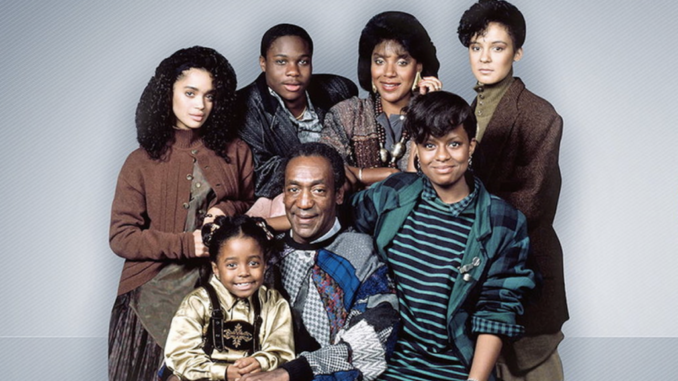
In 1984, The Cosby Show premiered and quickly set the gold standard for family sitcoms. Over its eight-season run, the show became an iconic series, not just because it was funny, but because it set an entirely new benchmark for portraying family dynamics on television. It wasn’t just about laughs – it was about love, family, and the kind of joy that comes from shared experiences. Today, The Cosby Show continues to stand as an example of what family entertainment can achieve when it strikes the perfect balance of humor, warmth, and realism.
In this article, we will explore how The Cosby Show brought a new level of heart and humor to TV, influencing generations of viewers and future sitcoms.
The Heart of the Show:
At its core, The Cosby Show was about the relationships within the Huxtable family. Dr. Cliff Huxtable and his wife Clair, played by Bill Cosby and Phylicia Rashad, were the beating heart of the show. They were a couple who genuinely cared for each other, who faced the ups and downs of life together, and who demonstrated the importance of partnership, communication, and humor in a marriage.
Cliff, as a father, was both funny and wise, offering life lessons with a combination of humor and sincerity. Clair, as the mother, was intelligent, assertive, and nurturing. The way the couple interacted with each other, and with their children, felt authentic and relatable. Their love for each other, combined with the trials and triumphs they faced, set a new standard for how parents were portrayed on television. It wasn’t just about being perfect parents; it was about being real, loving, and supportive.
Humor That Resonated:
The Cosby Show wasn’t just heartwarming – it was also incredibly funny. The show’s humor wasn’t based on crude jokes or forced slapstick, but on the everyday, relatable moments of family life. Whether it was Cliff’s hilarious antics to teach his kids a lesson or his interactions with his wife, the humor was grounded in authenticity. This made it not only fun to watch but also incredibly accessible to a wide range of viewers.
The humor was gentle yet sharp, never feeling forced. It was the kind of humor that made you laugh while also teaching you something. Cliff’s playful interactions with his children were endearing and funny, but they also imparted important lessons about love, responsibility, and respect.
Real Family Issues with a Positive Spin:
Unlike many sitcoms, The Cosby Show was unafraid to explore real-life family issues, yet always with a positive spin. From academic struggles to relationship challenges, the show tackled issues that many families face. The difference, however, was that the Huxtables handled these issues with grace, humor, and the kind of unconditional love that made them seem like the ultimate family role models.
Theo’s struggles with dyslexia, Vanessa’s rebellious teenage phase, and Rudy’s childish innocence were just a few examples of how the show dealt with the challenges of growing up. But these challenges were never presented as insurmountable – the Huxtables worked through them together, with patience and understanding. This positive portrayal of problem-solving and family support was a refreshing change from many other sitcoms of the era.
Legacy of Family Entertainment:
The impact of The Cosby Show on family sitcoms cannot be overstated. It set a new standard for how families could be portrayed on TV – with humor, warmth, and real emotional depth. The series was groundbreaking in its portrayal of a successful African American family and showed that the traditional family dynamics of love and conflict could resonate with audiences of all races.
The show’s influence extended far beyond its original run. The sitcoms that followed – from Family Matters to Full House – borrowed from the formula of The Cosby Show, focusing on family dynamics with humor and heart. In this sense, The Cosby Show was a pioneering force in the evolution of family television.
Conclusion:
The Cosby Show redefined family entertainment, raising the bar for sitcoms with its combination of humor, heart, and realism. It set a new standard for how family dynamics could be portrayed on television, showing that family entertainment could be both entertaining and meaningful. Today, the show remains a beloved classic, a benchmark for how TV can reflect the complexities of family life while still providing laughs and love in equal measure.
